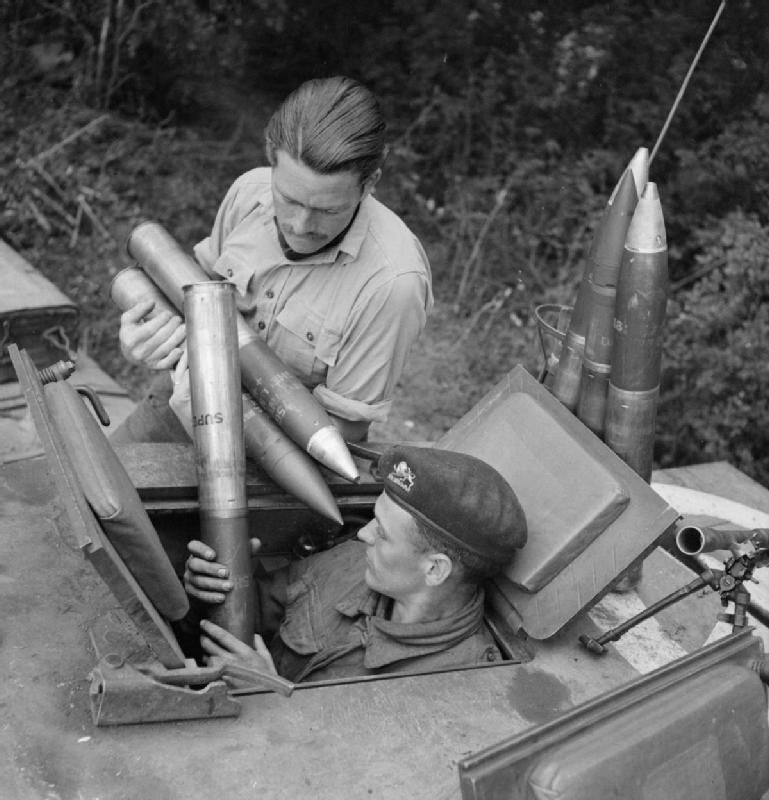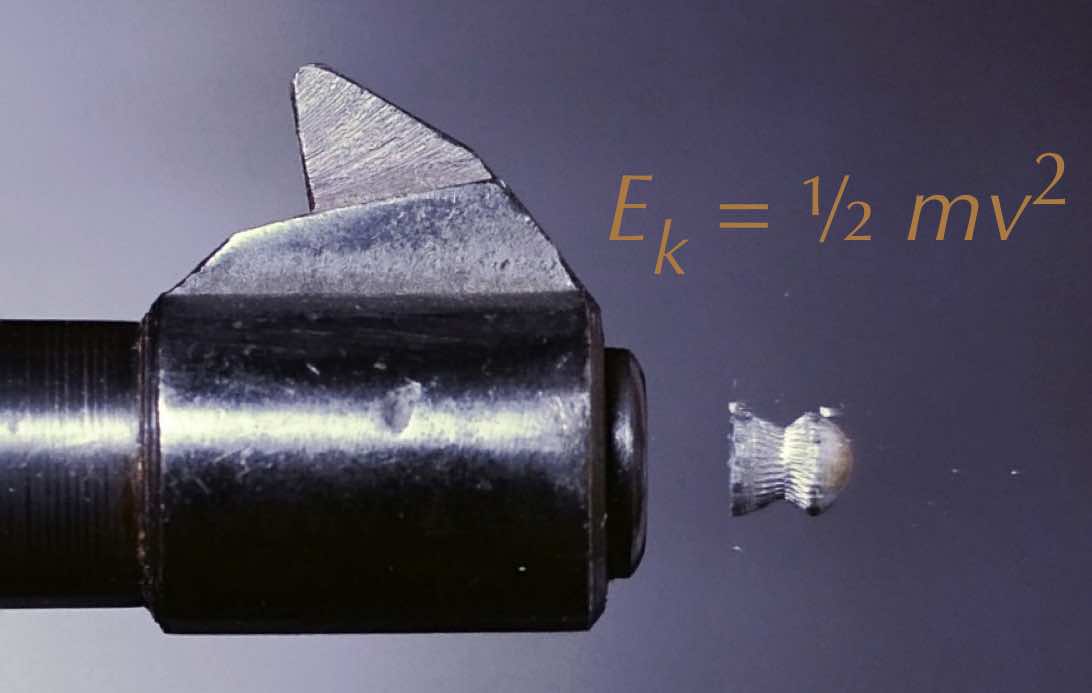|
Ordnance QF 75 Mm
The Ordnance QF 75 mm, abbreviated to OQF 75 mm, was a British tank gun of the Second World War. It was obtained by boring out the Ordnance QF 6-pounder ("6 pdr") 57 mm anti-tank gun to 75 mm, to give better performance against infantry targets in a similar fashion to the 75 mm M3 gun fitted to the American Sherman tank. The QF came from "quick-firing", referring to the use of ammunition where the shell has a fixed cartridge. The gun was also sometimes known as ROQF from Royal Ordnance (the manufacturer) Quick-Firing. Development Prior to the introduction of the ROQF 75 mm, British tanks had been equipped with first the QF 2-pounder (40 mm) and then the larger 6-pounder (57 mm). These guns were designed to fire armour-piercing shot, small high-velocity solid rounds that were effective against tanks but did little damage to groups of infantry or soft targets like trucks. Some tanks operating as infantry support were given howitzers firing HE shells, such as earl ... [...More Info...] [...Related Items...] OR: [Wikipedia] [Google] [Baidu] |
Cromwell Tank
The Cromwell tank, officially Tank, Cruiser, Mk VIII, Cromwell (A27M), was one of the series of cruiser tanks fielded by Britain in the Second World War. Named after the English Civil War-era military leader Oliver Cromwell, the Cromwell was the first tank put into service by the British to combine high speed from a powerful, reliable engine (the Rolls-Royce Meteor) and reasonable armour. The intended dual-purpose high velocity gun could not be fitted in the turret, so a medium velocity dual purpose gun was fitted instead. Further development of the Cromwell combined with a high velocity gun led to the Comet tank. The name "Cromwell" was initially applied to three vehicles during development. Early Cromwell development led to the creation of the A24 Cavalier. Later Cromwell development led to the creation of the competing Tank, Cruiser, Mk VIII, Centaur (A27L) design. The Centaur tank was closely related to the Cromwell, both vehicles being externally similar. The Cromwell ... [...More Info...] [...Related Items...] OR: [Wikipedia] [Google] [Baidu] |
Tunisia Campaign
The Tunisian campaign (also known as the Battle of Tunisia) was a series of battles that took place in Tunisia during the North African campaign of the Second World War, between Axis and Allied forces from 17 November 1942 to 13 May 1943. The Allies consisted of British Imperial Forces, including a Greek contingent, with American and French corps. The battle opened with initial success by the German and Italian forces but the massive supply interdiction efforts led to the decisive defeat of the Axis. Over 250,000 German and Italian troops were taken as prisoners of war, including most of the Afrika Korps. Background Western Desert The first two years of the war in North Africa were characterized by chronic supply shortages and transport problems. The North African coast has few natural harbors and the British base at Alexandria on the Nile delta was some by road from the main Italian port at Tripoli in Libya. Smaller ports at Benghazi and Tobruk were and west of Alexan ... [...More Info...] [...Related Items...] OR: [Wikipedia] [Google] [Baidu] |
Armour-piercing Discarding Sabot
Armour-piercing discarding sabot (APDS) is a type of spin-stabilized kinetic energy projectile for anti-armour warfare. Each projectile consists of a sub-calibre round fitted with a sabot. The combination of a lighter sub-calibre projectile with a full-calibre propellant charge allows for an increase in muzzle velocity compared to full-calibre rounds, giving the round increased armour-penetration performance. To further enhance their armour-penetration capabilities, APDS rounds typically feature a hardened core made from tungsten or another hard, dense material. For a given calibre, APDS ammunition can effectively double the armour penetration of a gun when compared to full-calibre rounds such as AP, Armour-piercing Capped (APC), and Armour piercing Capped Ballistic Cap (APCBC) projectiles. APDS-rounds were commonly used in large calibre tank guns up until the early 1980s, but have since been superseded by armour-piercing fin-stabilized discarding sabot (APFSDS) projectiles ... [...More Info...] [...Related Items...] OR: [Wikipedia] [Google] [Baidu] |
Operation Overlord
Operation Overlord was the codename for the Battle of Normandy, the Allied operation that launched the successful invasion of German-occupied Western Europe during World War II. The operation was launched on 6 June 1944 (D-Day) with the Normandy landings. A 1,200-plane airborne assault preceded an amphibious assault involving more than 5,000 vessels. Nearly 160,000 troops crossed the English Channel on 6 June, and more than two million Allied troops were in France by the end of August. The decision to undertake a cross-channel invasion in 1944 was taken at the Trident Conference in Washington in May 1943. General Dwight D. Eisenhower was appointed commander of Supreme Headquarters Allied Expeditionary Force, and General Bernard Montgomery was named commander of the 21st Army Group, which comprised all the land forces involved in the invasion. The coast of Normandy of northwestern France was chosen as the site of the invasion, with the Americans assigned to land at sect ... [...More Info...] [...Related Items...] OR: [Wikipedia] [Google] [Baidu] |
Ammonium Nitrate
Ammonium nitrate is a chemical compound with the chemical formula . It is a white crystalline salt consisting of ions of ammonium and nitrate. It is highly soluble in water and hygroscopic as a solid, although it does not form hydrates. It is predominantly used in agriculture as a high-nitrogen fertilizer.Karl-Heinz Zapp "Ammonium Compounds" in ''Ullmann's Encyclopedia of Industrial Chemistry'' 2012, Wiley-VCH, Weinheim. Global production was estimated at 21.6 million tonnes in 2017. Its other major use is as a component of explosive mixtures used in mining, quarrying, and civil construction. It is the major constituent of ANFO, a popular industrial explosive which accounts for 80% of explosives used in North America; similar formulations have been used in improvised explosive devices. Many countries are phasing out its use in consumer applications due to concerns over its potential for misuse. [...More Info...] [...Related Items...] OR: [Wikipedia] [Google] [Baidu] |
Amatol
Amatol is a highly explosive material made from a mixture of TNT and ammonium nitrate. The British name originates from the words ammonium and toluene (the precursor of TNT). Similar mixtures (one part dinitronaphthalene and seven parts ammonium nitrate) were known as Schneiderite in France. Amatol was used extensively during World War I and World War II, typically as an explosive in military weapons such as aircraft bombs, shells, depth charges, and naval mines.Brown, G. I. (1998). ''The Big Bang: A History of Explosives''. Sutton Publishing . pp. 158-163. It was eventually replaced with alternative explosives such as Composition B, Torpex, and Tritonal. Invention Following the Shell Crisis of 1915 in which the UK did not have enough ordnance due to a lack of explosives, a team at the Royal Arsenal laboratories produced a mixture of ammonium nitrate and TNT, known as Amatol for short. Special factories were constructed for the manufacture of ammonium nitrate by the do ... [...More Info...] [...Related Items...] OR: [Wikipedia] [Google] [Baidu] |
Trinitrotoluene
Trinitrotoluene (), more commonly known as TNT, more specifically 2,4,6-trinitrotoluene, and by its preferred IUPAC name 2-methyl-1,3,5-trinitrobenzene, is a chemical compound with the formula C6H2(NO2)3CH3. TNT is occasionally used as a reagent in chemical synthesis, but it is best known as an explosive material with convenient handling properties. The explosive yield of TNT is considered to be the standard comparative convention of bombs and asteroid impacts. In chemistry, TNT is used to generate charge transfer salts. History TNT was first prepared in 1863 by German chemist Julius Wilbrand and originally used as a yellow dye. Its potential as an explosive was not recognized for three decades, mainly because it was too difficult to detonate because it was less sensitive than alternatives. Its explosive properties were first discovered in 1891 by another German chemist, Carl Häussermann. TNT can be safely poured when liquid into shell cases, and is so insensitive t ... [...More Info...] [...Related Items...] OR: [Wikipedia] [Google] [Baidu] |
Loading Ammunition Into Churchill Tank Normandy 17-07-1944 IWM B 7619
Loading may refer to: Biology * Carbohydrate loading, a strategy employed by endurance athletes to maximize the storage of glycogen in the muscles * Creatine loading, a phase of use of creatine supplements * Vocal loading, the stress inflicted on the speech organs when speaking for long periods Engineering * Application of a structural load to a system ** Disk loading, the pressure maintained over the swept area of a helicopter's rotor ** Seismic loading, one of the basic concepts of earthquake engineering ** Wing loading, the loaded weight of an aircraft divided by the area of its wing * Loading characteristic, a measure of traffic on a telephone system * Insertion of an electrical load into a circuit ** Use of a loading coil to increase inductance * Loading (computing), the process in which the contents of a file are read into a computer's memory Other uses * Task loading, the number of tasks taken on by a diver * Loading (TV channel), a Brazilian TV Network focused on pop and g ... [...More Info...] [...Related Items...] OR: [Wikipedia] [Google] [Baidu] |
Ordnance QF 95 Mm Howitzer
The Ordnance QF 95-mm howitzer was a British howitzer built in two versions during the Second World War. The tank howitzer version was accepted for service use, but the infantry version was not. Design and development The Ordnance QF 95-mm tank howitzer was designed to be fitted to some later British tanks so they could lay smoke screens or fire HE or HEAT/Hollow Charge shell against concrete targets like pillboxes in the "close support" of infantry. A HESH round may have been issued after World War II. The 95mm howitzer used fixed ammunition with a projectile, rather than separate charge and round common for artillery howitzers. The tank howitzer was used to arm the Churchill Mark V and VIII, the Cromwell VI & VIII and the Centaur IV tanks. The howitzer was built up from a section of a QF 3.7-inch anti-aircraft gun barrel, the breech mechanism of the Ordnance QF 25 pounder field gun/howitzer and the recoil mechanism of the Ordnance QF 6 pounder anti-tank gun. The ammunit ... [...More Info...] [...Related Items...] OR: [Wikipedia] [Google] [Baidu] |
Muzzle Energy
Muzzle energy is the kinetic energy of a bullet as it is expelled from the muzzle of a firearm. Without consideration of factors such as aerodynamics and gravity for the sake of comparison, muzzle energy is used as a rough indication of the destructive potential of a given firearm or cartridge. The heavier the bullet and especially the faster it moves, the higher its muzzle energy and the more damage it will do. Kinetic energy The general formula for the kinetic energy is :E_\mathrm = \frac mv^2 where :''v'' is the velocity of the bullet :''m'' is the mass of the bullet. Although both mass and velocity contribute to the muzzle energy, the muzzle energy is proportional to the mass while proportional to the ''square'' of the velocity. The velocity of the bullet is a more important determinant of muzzle energy. For a constant velocity, if the mass is doubled, the energy is doubled; however, for a constant mass, if the velocity is doubled, the muzzle energy increases ''four'' t ... [...More Info...] [...Related Items...] OR: [Wikipedia] [Google] [Baidu] |


.jpg)




